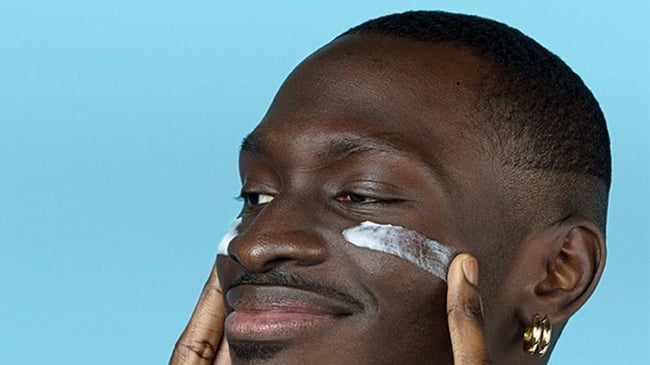

For skin that’s soft and well hydrated, there’s only one solution.
If you’re an avid reader of our articles, or if you’re curious about skincare products, you’ve most certainly heard of moisturisers and face creams. Maybe you heard that these products are essential to your daily skincare routine. But do you really know what its role is? We’re here to enlighten you.
What does a face moisturiser do?
First of all, let's start by briefly explaining how the skin and epidermis work. Basically, your skin is made up of different layers. The most superficial layer, along with the hydrolipidic film, is the stratum corneum. These two constitute your skin barrier. In the stratum corneum, there are natural moisturising factors that work to keep your skin’s hydration levels at their optimal levels. However, when these natural moisturising factors are altered, your skin can dry out. Aging, daily hygiene, harsh tap water, dry or cold air (or both), repeated sun exposure, and even shaving, are all factors that contribute to the drying out of your skin. Every day, between 300 and 400ml water evaporates from your skin (when you think of it like that, it seems like a lot, but 70% of your skin is made of water). In comparison, a pint of beer contains 500ml.
This is where the face moisturiser comes in. Thanks to its composition, it not only forms a barrier against external aggressions, but also helps the skin to stay hydrated, to limit the evaporation of water by the skin.
Ok, but how does it work?
To be effective, a facial moisturiser must act as a humectant, i.e. it attracts water to the stratum corneum. Examples of humectants include glycerin and hyaluronic acid. When humectants attract water, they also help retain the hydration thanks to their hygroscopic abilities (that is to say "water-hungry" properties). In short, they act like tiny sponges, helping to hydrate the skin. On the other hand, the so-called occlusive ingredients retain it. Be careful, however, because an ingredient that is too occlusive, such as certain mineral oils, can form a film on the skin which will clog the pores, risking being comedogenic (i.e. it can cause the appearance of comedones, blackheads and pimples). That’s why it's all about measurement. There are also moisturising active ingredients which are ideal for your skin’s moisture levels, which, as their name suggests, have the effect of keeping your skin hydrated.
Emollient ingredients have the action of softening, loosening or relaxing the tissues it encounters. They simply make your skin softer and firmer. These are often fatty substances, such as vegetable oils.
I’m convinced. But when should I use it?
It all depends on your skin. If you have rather dry skin, you can apply a face cream twice a day: in the morning and in the evening. Be sure to apply it to clean skin, otherwise the occlusive ingredients could keep impurities “stuck” under your skin, and cause pimples. That’s why we strongly recommend using a gentle cleanser before applying your face cream.
Applying once a day might also be enough, as long as you’re using a moisturiser that's right for your skin type. Rich moisturisers, for example, are not helpful for oily skin types, which would benefit more from using a mattifying moisturiser.
You’ll see, pretty soon you might not be able to live without it.
